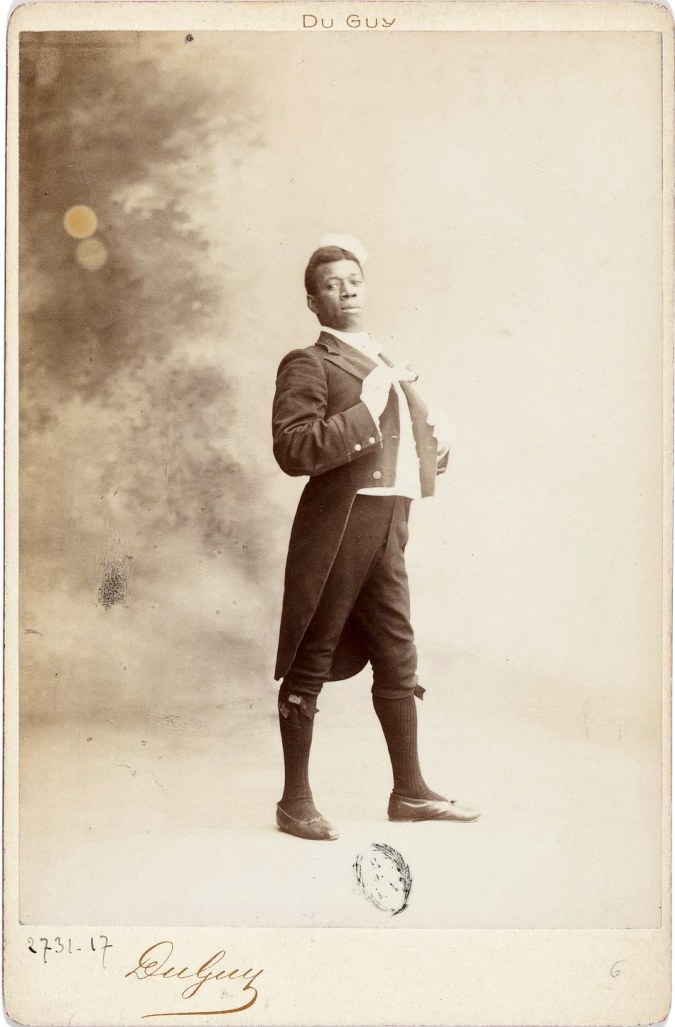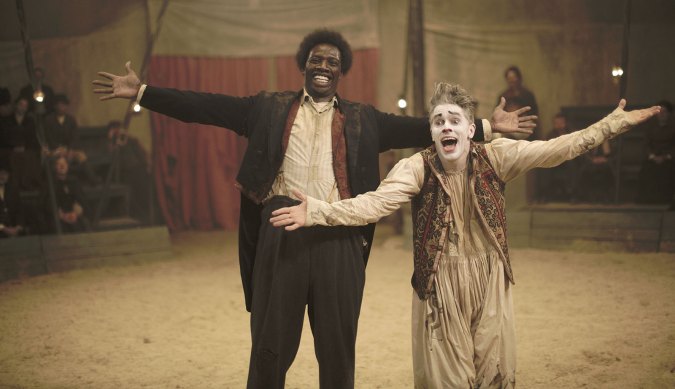Throughout the 20th century, France was known as a racially enlightened haven for black American artists and thinkers who chafed under the yoke of segregation and racial exclusion back home. That’s not to say, of course, that the Land of the Franks didn’t have its own particular brand of racism, but at least the French weren’t lynching unsuspecting citizens of color for eyeballing white ladies on Main Street. Indeed, the French had a sort of exotic fascination with blackness that came as a sigh of relief to jazz musicians, writers, and performers who began migrating to France as early as the 1920s.
But few may realize that the French actually had their first black celebrity nearly four decades before names like Josephine Baker became part of their national cultural landscape, and he happened to be an Afro-Cuban clown known by the unfortunate stage name of Chocolat. Born in the region of Havana around 1868, Chocolat’s official name of Rafael Padilla was an unsubstantiated, possible invention of the French coroner who wrote up his death certificate decades later. Whatever his last name actually was, Rafael “Chocolat” was born into slavery and ultimately abandoned by his parents before being sold as a servant to a well-to-do merchant from Bilbao.

Few may realize that France had its first black celebrity four decades before Josephine Baker, an Afro-Cuban clown known by the stage name of Chocolat.
After making the transatlantic voyage from Cuba to Basque country, an adolescent Chocolat eventually ran away from the merchant’s household and set about making a living however he could on the streets of Bilbao. It was there that a British clown by the name of Tony Grice caught sight of Chocolat’s physical aptitudes and brought him on the road as his assistant, eventually setting up shop in Paris where another British clown known as Footit became fascinated with his innate comic abilities.
Footit quickly proposed a partnership, and at the height of France’s late 19th-century Belle Époque — made famous by Henri Toulouse Lautrec and the Moulin Rouge — the duo took up a residency at the world famous Nouveau Cirque. With Footit, Chocolat took on the role of the auguste — which amounted to a more baffoon-like figure who contrasted with the traditional white clown’s straight-man act. Throughout their show, Chocolat’s character would endure abuse and bullying from Footit’s clearly dominant clown character, but would often turn the tables to exact revenge by the end of the act.
In addition to earning their status as celebrities among Belle Époque Parisian society, Footit and Chocolat actually revolutionized modern clowning. The clown-auguste dynamic developed between the two eventually became the gold standard for subsequent duos, while their difficulty improvising dialogue in French led the partners to develop a much more scripted style of presentation based around “entrées,” or sketches. In 1896 some of these sketches were even caught on camera by cinema pioneers the Lumière Brothers in one of the first motion pictures ever created.
By the early 20th century the duo began to drift apart. Footit was interested in starting an act with his children, leaving Chocolat to do the same with his own son, Eugène. In the years that followed, both were mildly successful but were never able to replicate the renown they earned in their time at the Nouveau Cirque. Footit and Chocolat came back together sporadically for special reunion shows, but Chocolat began to fall deeper into alcoholism and depression following the death of his daughter from tuberculosis. Taking any work he could find, Chocolat found himself scraping by economically, and ultimately died in poverty in 1917, around the age of 49.
Following his death, Chocolat was all but forgotten by French society, immortalized only thanks to a handful of paintings by Toulouse-Lautrec and Edmond Heuzé. It was on account of this iconography that a Chocolat character appeared in a number a films throughout the 20th century, including John Huston’s 1952 Moulin Rouge and Vincent Minnelli’s An American in Paris. Since the beginning of the 21st century, a number of academic studies, documentaries, and homages to Chocolat have sparked renewed interest in this mythical figure of the French stage, culminating in a new feature by Roschdy Zem entitled Chocolat.
A number of homages to Chocolat have sparked renewed interest… culminating in a new feature by Roschdy Zem.
Starring Omar Sy as the titular Afro-Cuban clown, Chocolat has earned critical praise following its recent premiere in French cinemas. Including a special performance by Charlie Chaplin’s own grandson, James Thiérrée, as Footit, the feature has been noted for the stunning power of its performances, and more importantly for its incisive critique of the racist legacy of French society. Indeed, if black performers in France were able to reach heights of fame and renown unavailable to them in other countries, Zem suggests it was often at the cost of their own dignity.
Chocolat will likely be making its way to American theaters before too long. In the meantime, French speakers can enjoy the 2012 feature Chocolat Clown, which documented a staged homage to the legendary figure starring Yann Gael and directed by Marcel Bozonnet.





